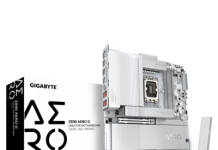Around the world, smart buildings are gaining momentum due to a confluence of factors that include technological innovations, pervasive connectivity, and a greater focus on comfort and environmental friendliness.
What is a Smart Building?
Envisioned to change the way we live and work, smart buildings essentially revolve around the use of technology to enhance efficiency and foster the well-being of their occupants. Where there is no actual definition of what constitutes a smart building, much has been written about their capabilities.

For instance, standalone systems can be connected via a common network that offers easier facilities management and more efficient utilisation. Equipped with a variety of sensors, a smart building could hence gather and track information about the structure’s energy usage and performance, ensuring optimal cooling and ventilation.
The vast amount of data can also be leveraged to find signs of impending system failures or problems, allowing maintenance teams to stay one step ahead of an interrupt in essential services.
Elsewhere, occupants entering a meeting room could have the environment automatically tailored to their preference. And instead of wasting time by calling a colleague to check their whereabouts, how about launching an app to quickly find them on a map of the building, or to find an available hot desk to work from? Smart office technology is becoming increasingly accessible through service providers like Schneider Electric, which offer digital services for smart offices.
A Security Divide
Yet even as buildings become more complex and the number of IoT devices and building systems wired to the cloud increase exponentially, scant attention is being paid to potential cybersecurity challenges. Indeed, buildings systems today often fall short of effectively managing any potential cyber intrusion, says Ram Venkat of Schneider Electric in a blog post.
According to Venkat, this stems from the inherent disconnect between the groups managing Information Technology (IT) systems and those tasked with taking charge of Operational Technology (OT). The former pertains to traditional IT systems, while the latter includes building management systems (BMS) which are deployed to manage building facilities.
As you might expect, the BMS is not traditionally connected to the Internet and are hence secured more through obscurity and obscure protocols. With buildings increasingly being wired up to the Internet and the growing of hacker communities specialising in cyberattacks against smart buildings, it is imperative that these systems are secured.

The Secure Smart Building
While securing smart buildings is easier said than done, there are four key strategies that organisations can adopt to create a secure and operational smart building. For a start, they need to access, identify and protect legacy OT building control systems, ensuring that they are protected behind firewalls and not otherwise directly exposed to the Internet.
When it comes to acquiring IoT devices, it is imperative that they go with vendors that follow a secure development lifecycle approach, and where security is incorporated at every stage of development, such as with Schneider Electric’s EcoStruxure for buildings.
Finally, despite the temptation to intermingle OT and IT infrastructure, smart building owners should instead implement a system architecture that properly segregates their OT building control system. This should be bridged through a security monitoring zone that is actively monitored by relevant cybersecurity experts on the IT team.
You can learn more about cybersecurity for smart buildings from Schneider Electric here.








